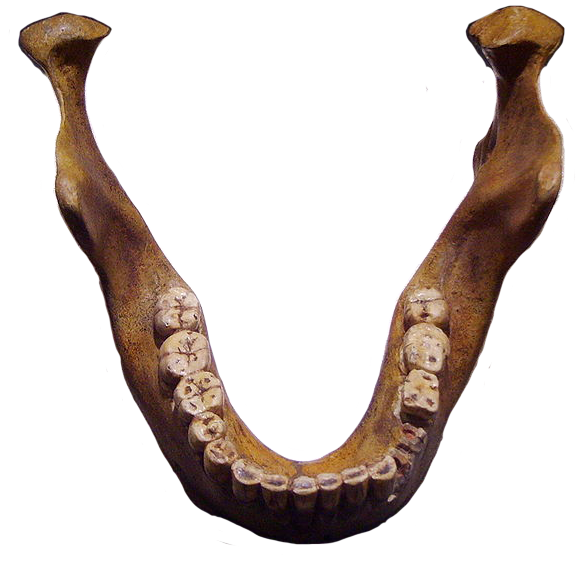
- Johanna Kontny u. a.: Reisetagebuch eines Fossils. In: Günther A. Wagner u. a., S. 48. – Durch intensives Kauen wird der Zahnschmelz allmählich abgetragen und das Dentin freigelegt; daher kann das Ausmaß dieses Abriebs als Anhaltspunkt für die Abschätzung des Lebensalters genutzt werden.
The Mauer 1 mandible is the oldest fossilized specimen of the genus Homo ever to be discovered in Germany. It was found in 1907 in a sand mine in the community Mauer, around ten kilometers south-east of Heidelberg. The Mauer 1 mandible is the type specimen of the species Homo heidelbergensis. European researchers have classified the find as Homo erectus heidelbergensis, which is to be regarded as a subspecies of Homo erectus. In 2010 the mandible's age was for the first time exactly determined as to be 609,000 ± 40,000 years. Previously specialist literature had referred to an age of either 600,000 or 500,000 years on the basis of less accurate dating methods.
For more information, click here. Or, Try these sources:
- Günther A. Wagner u. a.: Radiometric dating of the type-site for Homo heidelbergensis at Mauer, Germany. In: Proceedings of the National Academy of Sciences. Band 107, Nr. 46, 2010, S. 19726–19730 doi:10.1073/pnas.1012722107. Can be read here.
- Otto Schoetensack: Der Unterkiefer des Homo Heidelbergensis aus den Sanden von Mauer bei Heidelberg. Ein Beitrag zur Paläontologie des Menschen. Leipzig, 1908, Verlag von Wilhelm Engelmann